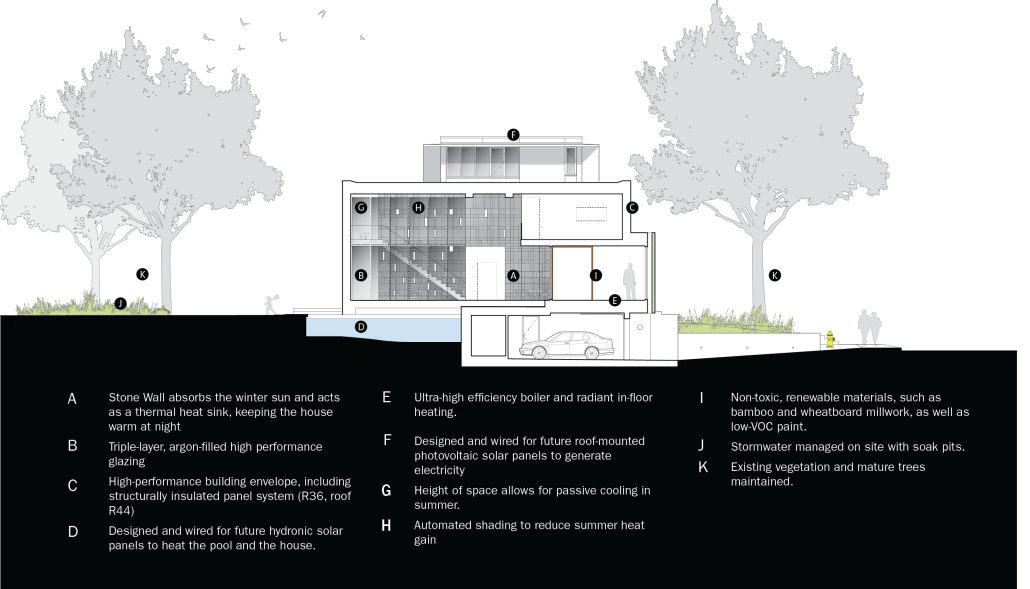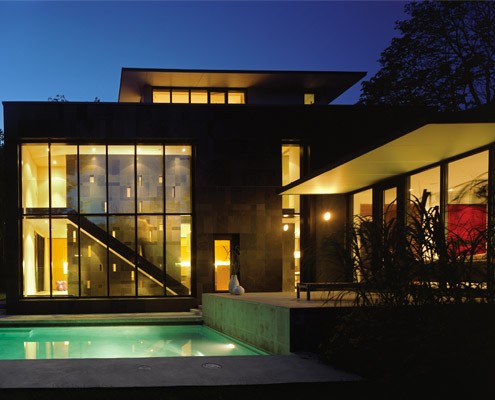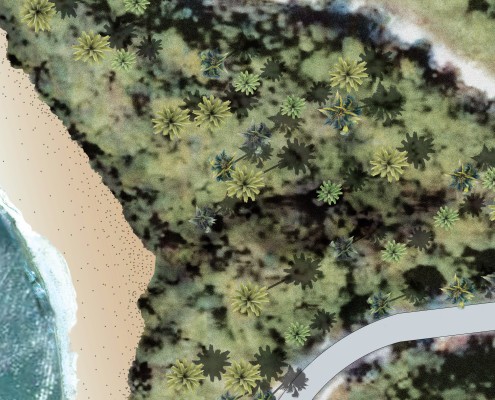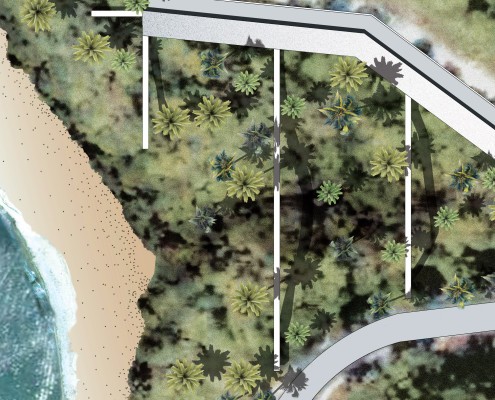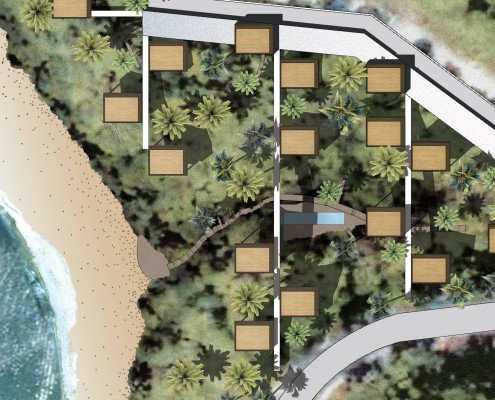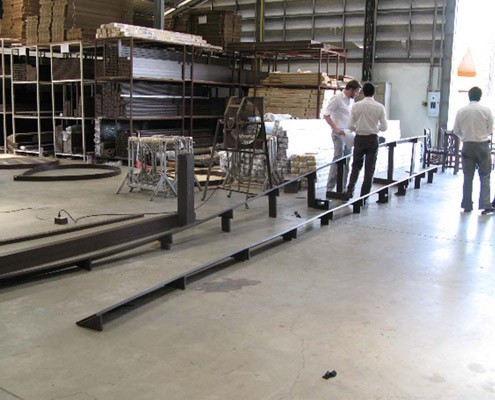Cascade House is oriented precisely North-South-East-West to optimize its passive solar design. Configured in an L-shape opening southward, the house’s large south-facing windows allow the winter sun to heat the building. The dark stone wall is a passive heat-sink, absorbing the winter sun’s heat by day and emanating it by night.
A high performance building envelope allows the passive systems to be extremely efficient and effective. This was evidenced during the house’s historically coldest month (December 2008) when the 375 square meter home cost merely $100 to heat.
Efficient planning and design reduced the size of the house to 30% less than normal for a house of comparable amenity, minimizing its use of energy and materials as well as its site-impact and cost. The house uses durable, non-toxic materials detailed for longevity. For example, it utilizes a structural insulated panel system (SIPS) which cost-effectively provides high thermal and moisture resistance. Additionally, the sculptural glass screen on its front facade is made from ‘off-the-shelf’ 19mm glass, the most economical glass available. Cut into 475 narrow pieces joined with standard silicone, minimal resources result in a maximization of both daylight and privacy
The Tree-top Villas are a luxury residential complex on a steeply-sloped tropical beachfront site. The property is a lush virgin jungle ripe with mature trees. Normally, such coveted land is developed with large, single-storey houses. This would require extensive terracing and leveling of the site for driveways and expansive buildings, thereby destroying the landform and trees.
The architectural strategy treats the landform and trees as valuable assets, preserving and then providing access to them. Parking is compactly arranged near the site entry at the top of the slope, minimizing the need for retaining walls, re-grading, and paving. One enters the villas by footbridge high among the treetops.
The villas are made with simple local construction techniques and local non-toxic materials. For example, bamboo, locally grown and rapidly replenishable, is used for the architectural screens. These screens shade the east and west facades as well as the roof terraces from the sun, thus reducing solar heat gain and associated energy consumption. The small-footprint/low-impact buildings are strategically arranged to preserve trees, but also to provide ideal ocean views to the north where expansive windows are shaded from direct sunlight.
The Bluepoint Residences are designed to maximize beautiful ocean views while maintaining privacy for its inhabitants. Its sweeping facades are made of a series of vertical louvers which, while providing both vistas and privacy, also reduce heat gain from sunlight, and associated energy consumption, by over 60%.
The louvers are constructed in long, continuous components from a lightweight wood-plastic composite (WPC) that is produced locally and economically. The WPC used is primarily made of waste sawdust from timber mills. WPC is highly resistant to rot, remains stable in high humidity and temperature conditions, and is comparatively lightweight. The louver design harnesses both WPC’s strength and its pliability.
The louver system is easy to manufacture and install and is extremely resilient. Paul Raff Studio can adapt and apply this system to almost any type of building.

